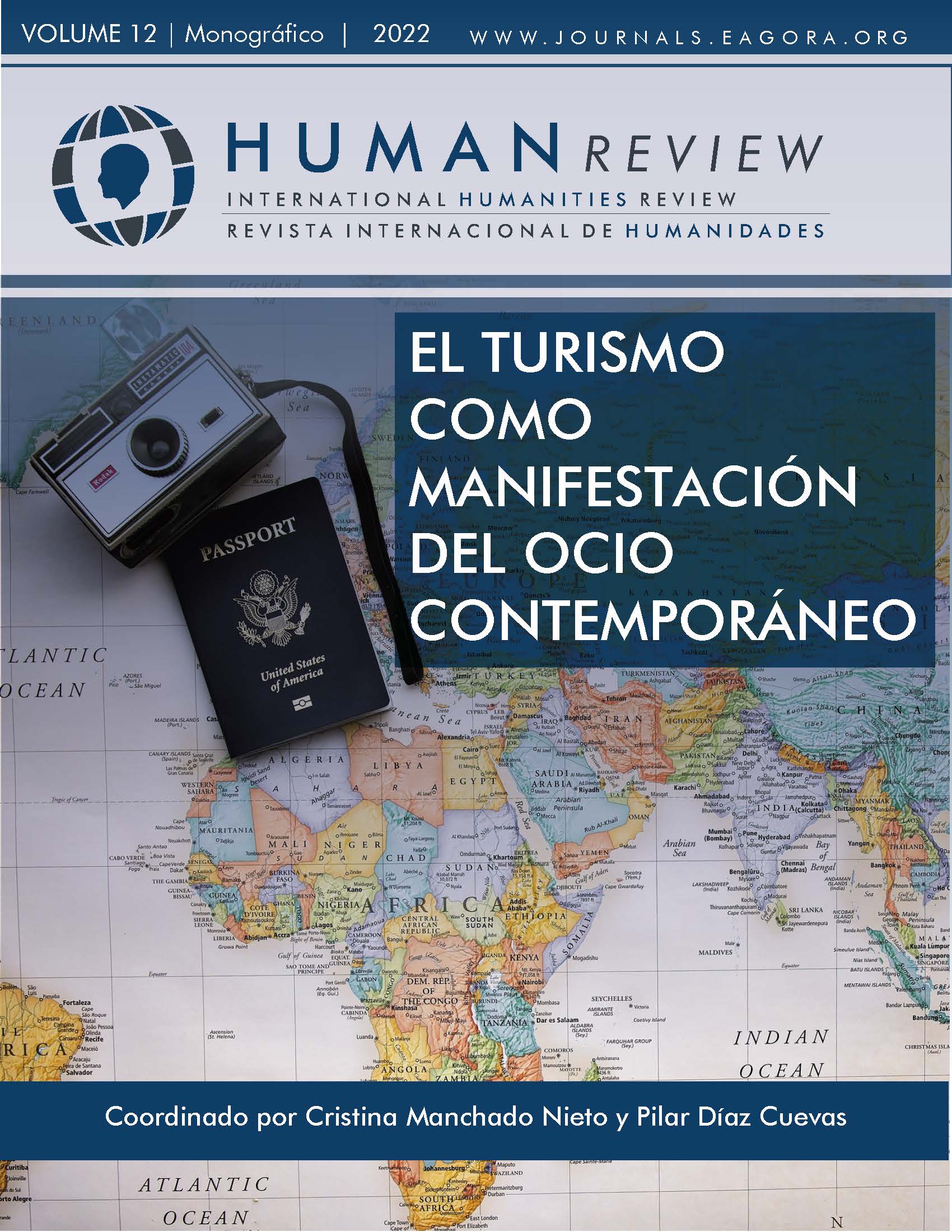Sustainable Tourism, Ecotourism & ECST: Sierra Nevada (Spain)
DOI:
https://doi.org/10.37467/revhuman.v11.3995Keywords:
Sustainable tourism, Sierra Nevada National and Natural Park, European Charter for Sustainable Tourism, Ecotourism, Local stakeholderAbstract
This article will study the usefulness of the European Charter for Sustainable Tourism in Sierra Nevada as a tool to promote sustainable tourism in protected areas. It aims to show how the adoption of the CETS has led to a real involvement of companies with the territory, increasing the sense of belonging and active associationism, as well as to the implementation of collective and individual actions that contribute to improving environmental, economic, and social sustainability in the territories, to attract responsible tourists motivated by ecotourism and to the mitigation and adaptation of the territory to Climate Change.
References
Adger, W. N., Lorenzoni, I., & O‘Brien, K. L. (2009). Adapting to climate change: Thresholds, values, governance. Cambridge University Press. https://bit.ly/3z2hvrl (accessed 4/07/2022)
Andréu Abela, J. A. (2001). Las técnicas de análisis de contenido: una revisión actualizada. Documento de trabajo S, 2001. https://bit.ly/3PrESjw
Balandina, A., Lovén, L., Ostermann, O., & Partington, R. (2012). European Charter Parks—A growing network for sustainable tourism development in protected areas. Parks, 18(2), 132. https://bit.ly/3PpFiH6 (accessed 10 July 2022)
Balmford A, Green JMH, Anderson M, Beresford J, Huang C, Naidoo R, et al. (2015). Walk on the Wild Side: Estimating the Global Magnitude of Visits to Protected Areas. PLoS Biol, 13(2): e1002074. https://doi.org/10.1371/journal.pbio.1002074
Bord, R. J., Fisher, A., & Robert, E. O. (1998). Public perceptions of global warming: United States and international perspectives. Climate research, 11(1), 75-84. https://www.int-res.com/articles/cr/11/c011p075.pdf (accessed 10/07/2022).
Butler, R.W. (1993). Tourism - an evolutionary perspective. En J.G. Nelson, R.W. Butler and G. Wall (Eds), Tourism and Sustainable Development: Monitoring, Planning, Managing, (pp. 27-44). University of Waterloo (Department of Geography Publication 37). https://bit.ly/3PmnIDz (accessed 4 July 2022).
Butler, R. W. (1999). Sustainable tourism: A state‐of‐the‐art review. Tourism geographies, 1(1), 7-25. https://doi.org/10.1080/14616689908721291
Ceballos-Lascurá in, H. (1996). Tourism, ecotourism, and protected areas. https://doi.org/10.2305/IUCN.CH.1996.7.en
Conferencia Mundial de Turismo Sostenible. Carta Mundial de Turismo Sostenible. Lanzarote, 1992. https://bit.ly/3yBYH0z (accessed 4 July 2022).
Díaz-Cuevas, P., Becerra-Fernández, B., & Villar-Lama, A. V. (2021). Transición ecológica y emergencia climática en las enseñanzas de turismo. Cuadernos de Turismo, (48), 325-349. DOI: https://doi.org/10.6018/turismo.492791
Declaración de Daimiel (I Congreso Nacional de Ecoturismo, 2016) https://bit.ly/3P65XIX
Domínguez Iglesias, M. B. (2014). Impacto de la Carta Europea de Turismo Sostenible (Fase II) en el Estado español. https://bit.ly/3P5GRtW
Eber, S. (1992). Beyond the green horizon: principles for sustainable tourism. WWF UK.
Directrices Generales de la Estrategia de Turismo Sostenible de España 2030 (Documento de trabajo). https://bit.ly/3PpFypg
Europarc (2010) Seguimiento y Evaluación Plan de Acción de la Carta Europea de Turismo Sostenible en el Parque Nacional y Parque Natural de Sierra Nevada.
Europarc (2014) Seguimiento y Evaluación Plan de Acción de la Carta Europea de Turismo Sostenible en el Parque Nacional y Parque Natural de Sierra Nevada https://bit.ly/3Puy1Wm
Europarc (2020) Segumiento y Evaluación Plan de Acción 2014-2018 Carta Europea de Turismo Sostenible Parque Nacional, Parque Natural y Reserva de la Biosfera de Sierra Nevada.
CETS Sierra Nevada (2021) Seguimiento y Evaluación Intermedios Plan de Acción de la Carta Europea de Turismo Sostenible en el Parque Nacional y Parque Natural de Sierra Nevada.
Europarc (2022). https://www.europarc.org/sustainable-tourism/network-sustainable-destinations/
Fernandez Núñez, L. (2006). ¿Cómo analizar estudios cualitativos? Butlletí LaRecerca, 7(1), 1-13. https://issuu.com/malurojas19/docs/131._mastertesis_-_articulo_c_mo_analizar_datos_cu
Francés, I. L. (2010). El grupo de discusión como estrategia metodológica de investigación: aplicación a un caso. Edetania. Estudios y propuestas socioeducativos, (38), 147-156. https://revistas.ucv.es/edetania/index.php/Edetania/article/view/303/265
Hernández-Sampieri, R., Fernández-Collado, C., & Baptista-Lucio, P. (2006). Análisis de los datos cuantitativos. Metodología de la investigación, 407-499. https://investigar1.files.wordpress.com/2010/05/1033525612-mtis_sampieri_unidad_1-1.pdf
Liddle, M. (1997). Recreation ecology: the ecological impact of outdoor recreation and ecotourism. Chapman & Hall Ltd. https://bit.ly/3PbwKDO
Martín, M. B. G., López, X. A. A., & Iglesias, M. C. (2017). Percepción del Cambio Climático y respuestas locales de adaptación: el caso del turismo rural. Cuadernos de turismo, (39), 287-310. https://doi.org/10.6018/turismo.39.290571
Olivencia, Y. J. (2000). De los complejos naturales a los paisajes: el modelo de Sierra Nevada. Cuadernos Geográficos, 30, 347-364. https://revistaseug.ugr.es/index.php/cuadgeo/article/view/1966/2140
Olivencia, Y. J., Rodríguez, L. P., & Calvo, A. C. (2015). Medio siglo en la evolución de los paisajes naturales y agrarios de Sierra Nevada (España). Boletín de la Asociación de Geógrafos Españoles (68) 205-232. https://bage.age-geografia.es/ojs/index.php/bage/article/download/1859/1775/0
OMT, 2003. Assessment of the results achieved in realizing aims and objectives of the
International Year of Ecotourism UNWTO https://webunwto.s3-eu-west-1.amazonaws.com/2019-07/iye-rep-un-ga-2003.pdf
Plan Sectorial de Turismo de Naturaleza y Biodiversidad 2014-2020 aprobado por el Real Decreto 416/2014, de 6 de junio. «BOE» núm. 147, de 18 de junio de 2014. https://www.boe.es/buscar/pdf/2014/BOE-A-2014-6432-consolidado.pdf
Prados Velasco, M. J., & Valle Ramos, C. D. (2010). Naturbanización y cambios en la población de los espacios naturales de Doñana y Sierra Nevada. Documents d‘anàlisi geogràfica, 56(3), 435-460. https://bit.ly/3bZbAKo
PNUMA (1972). Programa de Naciones Unidas por el Medio Ambiente - PNUMA, (1972). https://bit.ly/3ckkdQ3
Rodríguez, M., Andrades, L. (2011). La Carta Europea de Turismo Sostenible: 15 años de experiencia. Análisis de su aplicación en España. In XVI Congreso de la asociación española de expertos científicos en turismo. https://bit.ly/3RBEa4V
The British Ecotourism Market (2001). Special report/WTO. World Tourism Organization.
Wolf, I. D., Croft, D. B., & Green, R. J. (2019). Nature conservation and nature-based tourism: A paradox?. Environments, (9), 104. https://doi.org/10.3390/environments6090104
Yagüe, P. (2002). Rural tourism in Spain. Annals of tourism Research, 29(4), 1101-1110. https://doi.org/10.1016/S0160-7383(02)00025
Downloads
Published
How to Cite
Issue
Section
License
Those authors who publish in this journal accept the following terms:
- Authors will keep the moral right of the work and they will transfer the commercial rights.
- After 1 year from publication, the work shall thereafter be open access online on our website, but will retain copyright.
- In the event that the authors wish to assign an Creative Commons (CC) license, they may request it by writing to publishing@eagora.org









